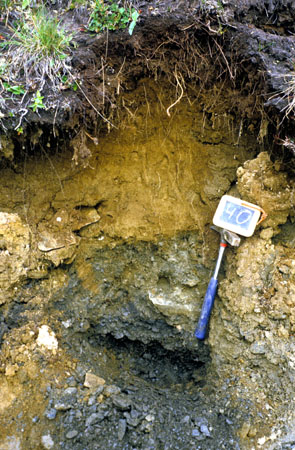|
|
Dystric Cambisol Location: Alps, Austria, 1500 m asl O: organic layer, raw humus, plant residues Ah: mineral soil with organic compounds Bw: brown color due to weathering of the minerals, mainly iron oxides and hydroxides. The high silt and sand content of the Bw and the relatively low stone content, compared to the IIC-horizon originates from eolian influence, changing the chemical and physical properties of the underlying bedrock. The sediments of the Bw-horizon were deposited during the lateglacial period, prior to the reforestation.IIR: Phyllite
|
|||||||
|
|
